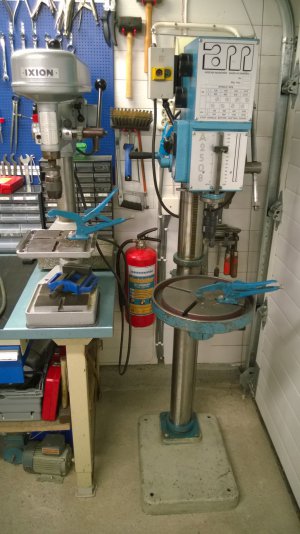- Joined
- Jan 7, 2013
- Messages
- 485
I also own a number of drill presses, 5 in all, and all are bench top models. I don't have a lot of room in the machine shop, so I have a smaller 10 inch Delta DP there. It only has a 2.5 inch depth for the quill, but I still find it handy to have around. Most of the time I have it set up for a counter sink. I really like having a drill press available.
Paul
Paul

